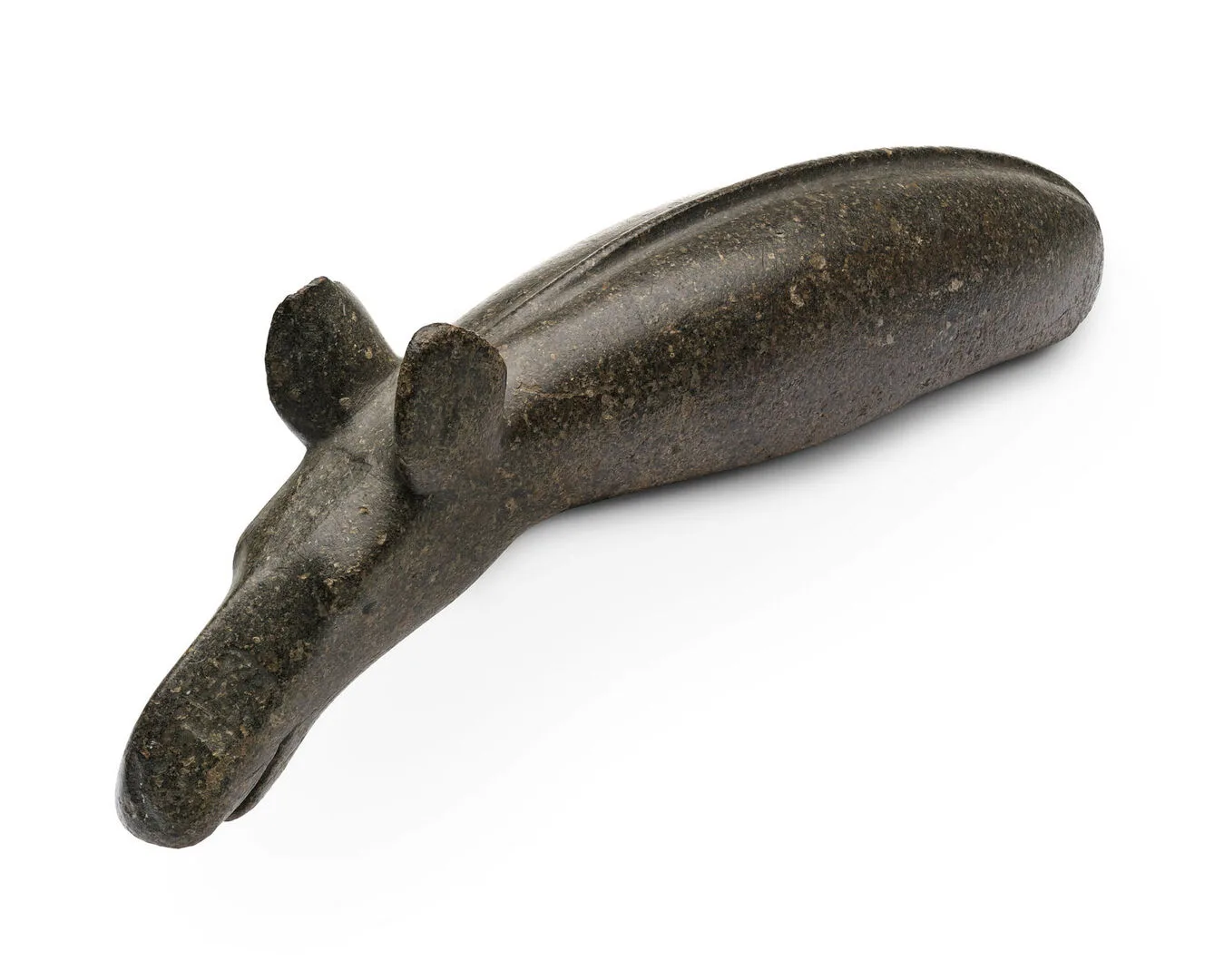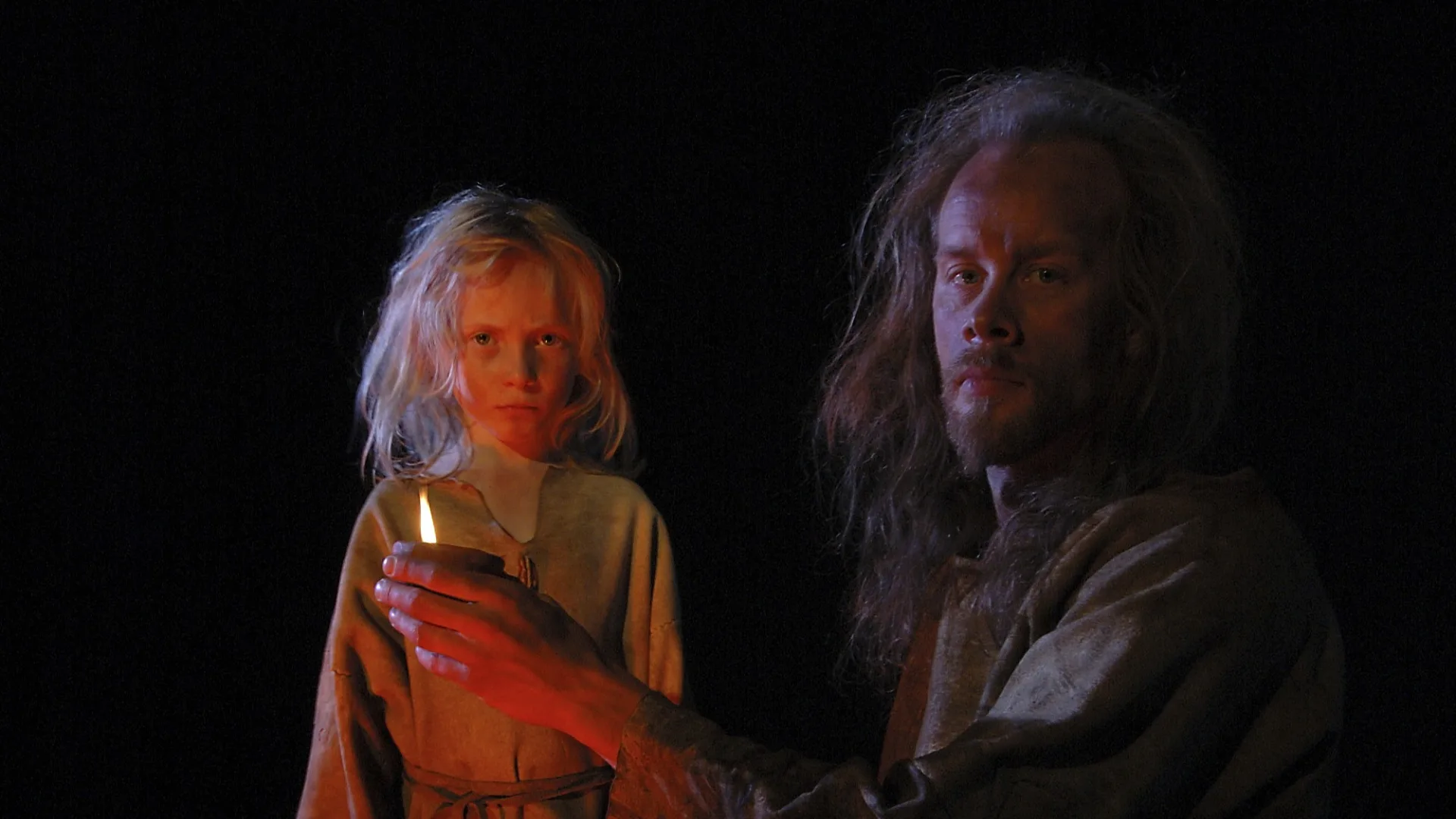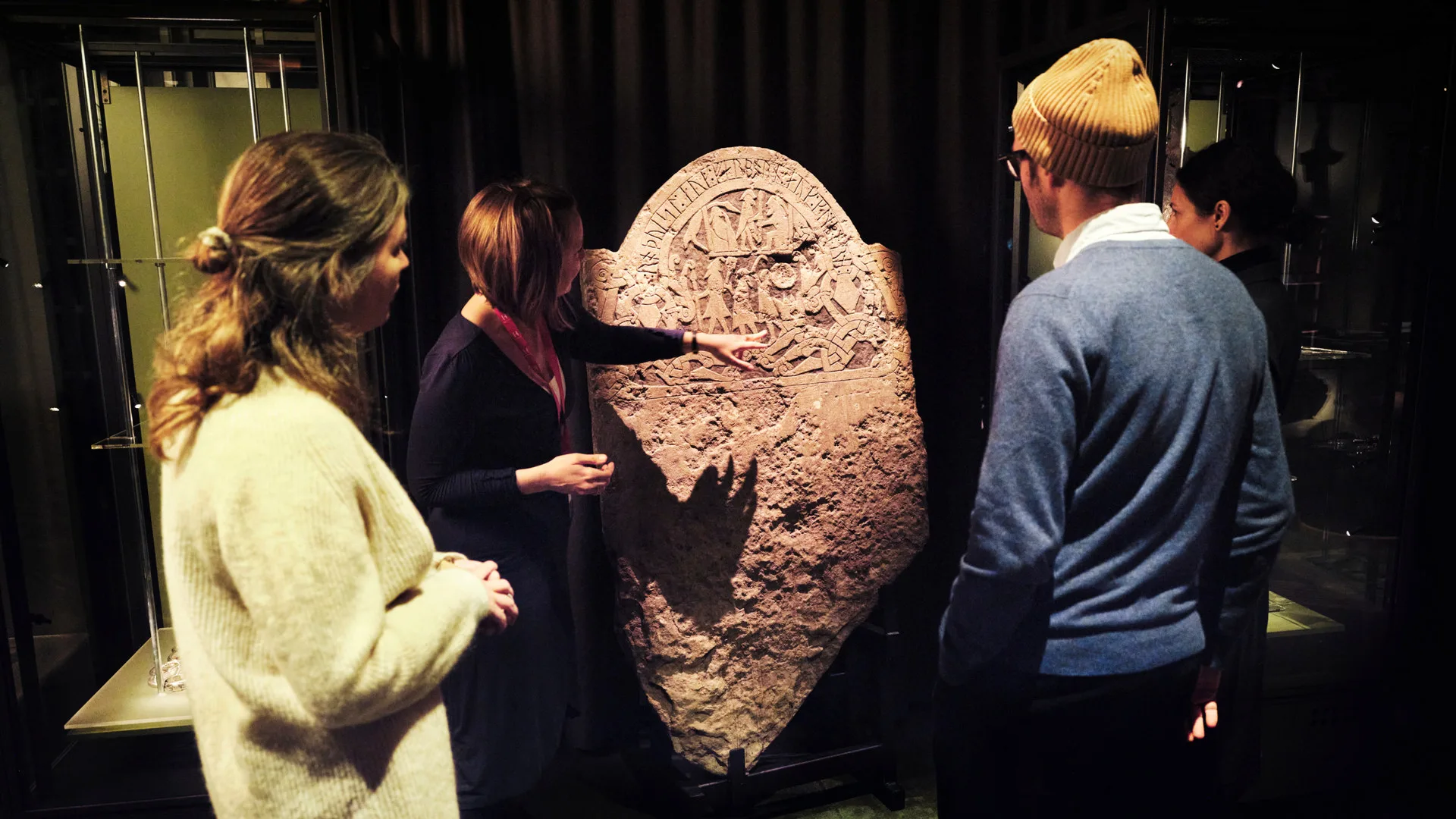The Alunda moose
Stone Age
12,000 BC – 1700 BC
Bronze Age
1700 BC – 500 BC
Iron Age
500 BC – AD 1100

The Alunda moose is an elongated head rendered with lifelike detail, upright ears, distinct eyes, a pronounced snout, and an open mouth. It represents a female moose, leaning forward as if on alert.
The sculpture is carved from a type of greenstone that is in the process of transforming into soapstone, making it somewhat easier to work with. On the underside, there is a drilled hole for mounting the object onto a shaft. However, the hole does not go all the way through, giving the axe an unfinished appearance.
The finely carved ridge running along the entire length of the back suggests that the hole was perhaps never intended to be fully pierced. Animal-headed axes typically feature small, unbalanced, and sometimes incomplete shaft holes. This implies that they were not designed for chopping or striking. Instead, they are generally interpreted as prestige objects or ritual items, possibly used in ceremonies.
When mounted on a shaft, the Alunda moose could have been carried and displayed. Depictions of human figures holding staffs topped with moose heads are among the well-known rock carvings at Nämforsen, Sweden.

The Alunda moose
A likely dating of the Alunda moose
The Alunda moose was probably made between 3000 and 2000 BC, the period to which animal-headed axes and maces are usually dated. Around 2900 BC, the area where the Alunda moose was found appears to have emerged from beneath the surface of the Baltic Sea. It is therefore most likely that the Alunda moose was created sometime between 2900 and 2350 BC, during the period associated with the Corded Ware Culture.
With its curved shape, shaft hole, and finely shaped ridge along the back, the Alunda moose bears a strong resemblance to the boat axes of the Corded Ware Culture. It seems to embody a fusion of the new axe aesthetics introduced by the Corded Ware Culture and the older northern tradition of finishing objects with animal heads, a custom prevalent among hunter-gatherer societies throughout the Late Stone Age.
The discovery site
The Alunda moose was discovered around Midsummer in 1910 during ditch-digging in a boggy hollow known as Gammelmyren, located at the northernmost end of Alunda parish in Uppland. It is not uncommon for beautiful and (to Stone Age people) valuable objects to be found in wetlands.
These are often interpreted as traces of ritual or religious practices, where such items may have been offered as sacrifices. Although the Alunda moose was found in Uppland, it was likely not made there. The type of stone it is carved from is not native to the region but occurs further east. The axe may have arrived in Alunda via migrating peoples or through the exchange of gifts, perhaps through several intermediaries. During the Late Stone Age, Alunda was situated at the outer edge of the coastline, and we know that travel across water was central to the era’s networks of contact.
3D-model of the Alunda Moose in the collections of the Swedish History Museum (CC BY 4.0).
The Alunda moose in comparison
Animal-headed axes and maces are extremely rare and are only found in Sweden, Finland, and Russia. Like the Alunda moose, these axes terminate in an animal head at one end, while the maces are shaped entirely as large animal heads.
The museum's collections include a probable bear-headed club from a Pitted Ware site in Stora Vika, Södermanland, and a moose-headed club from Östra Ryd, Östergötland. Another category of artefacts often ending in animal heads includes northern Late Stone Age slate tools, such as daggers and knives, some with moose heads. For instance, there is a dagger with an animal-head-shaped handle, and a whetstone ending in a bear's head.
Explore comparative objects:
- See the bear-headed club from Stora Vika, Södermanland: 95223_HST
- See the moose-headed club from Östra Ryd, Östergötland: 95224_HST
- See the dagger with animal-head-handle: 95227_HST
- See the whetstone with bear's head: 95225_HST
To find more direct parallels to the Alunda moose, we must look eastward. Two moose-headed axes from Finland, one from Kuusamo and one from Säkkijärvi, are remarkably similar in the way the head is formed. However, both have broken shaft holes, and in both cases, the cutting ends of the axes are missing.
Another moose-headed axe very similar to the Alunda moose, and still intact, was found in Padosero in Russian Karelia, though its ears are broken. The Alunda moose is therefore not only unusual in its artistry and craftsmanship, but also in its exceptional state of preservation. The Alunda moose is, in many respects, a truly remarkable artefact.






